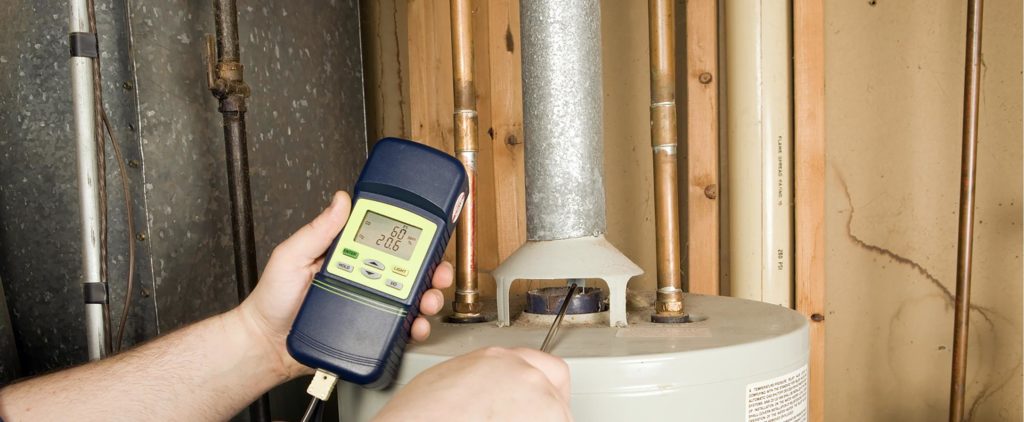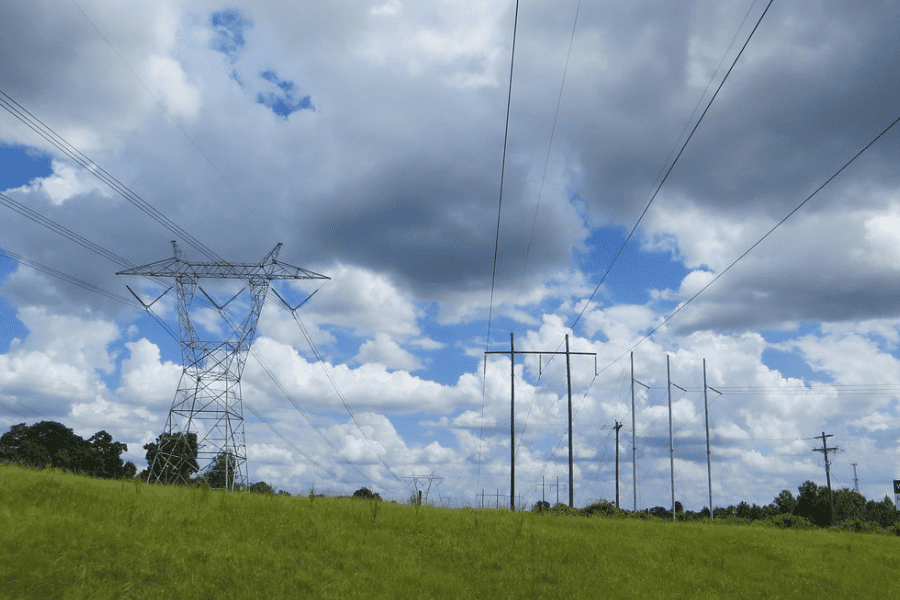Apr 24, 2023
All-Electric Buildings – The Safer Alternative
The most common argument for making buildings all-electric is environmental. But even while we promote the environmental benefits, we shouldn't miss out on one of the best reasons to go all-electric: safety.
By: Charley Cormany

The most common argument for making buildings all-electric is environmental.
Heat pumps and other modern electric appliances are more efficient than their gas counterparts, and they take advantage of the increasing amount of renewable energy on the grid. If we’re going to meet our climate change goals, we must electrify buildings, period.
But even while we promote the environmental benefits, we shouldn’t miss out on one of the best reasons to go all-electric: safety.
I have performed diagnostic testing on hundreds of buildings, and I can tell you from experience that gas furnaces, water heaters, and stoves have more safety issues than you might think, and sometimes these are serious. These are problems that all-electric buildings simply don’t have.
Diagnostic testing
Diagnostic testing is one of the most critical steps in improving an existing building. Many of the parameters technicians measure are invisible to the naked eye. Building analysts use various high-tech, super-sensitive diagnostic equipment to evaluate how the building’s major systems work collectively. Many of these diagnostic tests measure pressure. A large calibrated fan, called a blower door, tests how leaky the building is. Technicians use smaller calibrated fans to test duct systems. A device called a manometer measures pressure for a variety of other pressure-related tests.
Diagnostic testing allows you to concentrate on the problems that will have the most impact. For example, connecting a super high-efficiency heat pump to a leaky duct system does not make sense. It’s much better to replace the duct system at the same time, making sure that it is tightly sealed and sized correctly for the new heat pump.
Combustion safety testing
One of the most time-consuming and complicated diagnostic tests is combustion safety testing or CAS testing. If a home building has combustion devices (heat produced by flame), changes to the building envelope can create dangerous conditions for the occupants. The primary concern of CAS testing is to ensure that the combustion gasses and byproducts are exiting the building as intended. For example, changing the pressure dynamics of a building can reduce the ability of the flue gasses to vent outside completely.
CAS testing protocols are complicated, hard to repeat, and time-consuming. My least favorite diagnostic testing is combustion safety testing. I recently had a conversation with one of the leading experts on CAS training. He trained most of us in the business and has since retired. His take on combustion safety testing is that it’s hard to do, there are too many variables, and the results can be dubious. He suggests that homes should have no combustion devices, period.
That said, given that most homes do have gas furnaces, water heaters, and stoves, CAS testing might be the most critical evaluation we perform. To understand why we need to look at the common problems with combustion devices.
Common combustion safety issues
The three most common combustion appliances in residential situations are a furnace, gas water heaters, and gas stoves. CAS testing requires testing each appliance individually to ensure it functions as intended.
Gas furnaces are everywhere in California. The most common is an 80% efficient model that pulls combustion air from around the unit and expels waste products via a vent, often called a flue.
Common venting problems include:
- Blocked flues. Birds and other critters like to build homes in the flue during the summer. When winter comes, you fire up the furnace, and the waste gasses no longer exit. Where do these gasses end up? Inside the home.
- Poorly installed flues. Often installers will run a flue horizontally or slightly downhill. It seems harmless to them, but exhaust gasses don’t flow downhill. This can be deadly to the home’s occupants.
- Damaged flue pipes. Flue pipes often get damaged, and the damage goes undetected until there is a problem. Broken or poorly attached vent pipes can allow poisonous gases into the home.
- Flues that do not exit the building. We tested a house that had a new roof. Unfortunately, the roofers failed to cut a hole for the furnace flue, and it was now terminating in the attic, spewing waste products that could quickly re-enter the home.
The worst situation I have encountered was a new furnace installed with the wrong size vent. The building had three flats. The furnace in the bottom unit was recently replaced. The new furnace required a 4″ vent stack. The previous unit used a 3″ vent. The stack ran thirty feet up through the center of the building and was not easy to access. The installer used a reducer to attach the 4″ vent to the 3″ stack to complete the installation.
This simple mistake created a severe carbon monoxide issue. When we measured the carbon monoxide during our CAS test, the levels were so high we had to report the problem to the gas company, per safety protocols. The gas company “red-tagged” the building, shutting off the unit until the issue was resolved. The hardest part for me was telling the tenant they had been living in an unsafe apartment for weeks. She was relieved to now understand the source of her mysterious headaches. It could have ended much worse. Carbon monoxide is known as the silent killer.
Gas water heaters have their own issues:
- Flame roll-out. It is not uncommon to see evidence of flame roll-out on gas water heaters. The signs are burn marks around the gas valve at the bottom of the unit. Dirty burners or a defective gas valve are often the cause. The real danger is that people store all kinds of things around their water heaters: paint and paint thinners, gasoline, paper bags, fabric, etc. All it takes is one flame roll-out to burn the entire home down.
- Flue and venting issues. Disconnected or damaged flues are common. The problem is hazardous when the water heaters are inside the home, which is common.
- Broken or missing draft diverters. The vent on top of a gas water heater connects to a piece called a draft diverter. The diverter creates an air gap between the flue and the water heater. If the wind blows air back down the vent, it will spill out this gap instead of blowing out the flame in the combustion chamber. Imagine that design decision. Should we spew combustion byproducts back into the building or allow the flame to blow out? Which is the lesser evil?
- Backdrafting is when the flue gases are drawn down the vent stack and do not completely exit the building. Backdrafting water heaters are perhaps the most common CAS issue found in the field.
Many articles have been written on the dangers of gas stoves, mostly related to contamination when in operation. Are you aware they can pose a threat when not in use?
Here are a couple of examples we have discovered during CAS testing:
- We tested a house that had an older gas stove. It was one of those units like your grandma had, with many separate ovens, a griddle, and multiple burners. The owners were proud of it and paid big dollars to restore it. It had eight different pilot lights, each continually burning. The problem was that one of the pilots was not working correctly and didn’t stay lit. The result was that the unlit pilot was continuously spilling natural gas into the home—never a good idea.
- We once tested a home due to a complaint from the owners. It was a split-level home with a kitchen on the upper level. The mom used to bake and prepare dinner while the kids did homework around the dinner table. The mother was experiencing headaches and could not figure out why. During our CAS testing, we discovered that her new, expensive gas stove emitted significant levels of carbon monoxide. She stopped using it a called the manufacturer for service. It turns out one of the burner bars in the oven was damaged during transportation and was not working correctly.
- Gas ovens. A cold gas oven often emits significant levels of carbon monoxide until fully warmed up. Again, who decided that was a good design solution?
The most straightforward buildings to test are all-electric buildings
Building codes require carbon monoxide detectors to protect occupants from gas appliances. All-electric buildings have no combustion devices; therefore, you don’t need to do combustion safety testing. The name itself says it all – combustion safety testing. No combustion devices? No need to do CAS testing.
I used to think the solution was sealed combustion gas appliances. These units have two pipes that lead outside the building. One is for fresh air, and the other is a vent for combustion byproducts. Today I am convinced that the best solution is no combustion devices in the home, period. No combustion devices equal zero potential for gas explosions, carbon monoxide poisoning, fires, and other concerns.
We might be missing one of the best reasons to go all-electric
I don’t think the industry is doing a good job promoting the safety advantages of heating without flames or gas. Of course, the climate benefits of electrification are important, but we really need to step up the conversation about the safety benefits of all-electric solutions.
Natural gas and propane have long been accepted as the norm. Why are we willing to make significant compromises in safety when there are better solutions? All-electric homes don’t blow up from gas leaks. All-electric homes don’t poison their occupants with carbon monoxide. Induction cooking is faster, more controllable, and safer than gas.
If we were starting from scratch, none of us would choose combustion products over their electric counterparts, especially considering that the issues with combustion appliances can be fatal. It’s time we focus on the inherent safety benefits of heat pumps and all-electric homes. After all, the safety of the occupants should always be our primary consideration.
This article originally appeared on the EFCA blog and is republished with permission.




